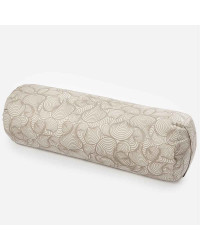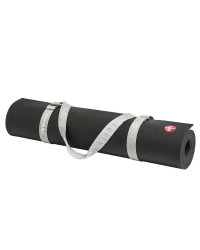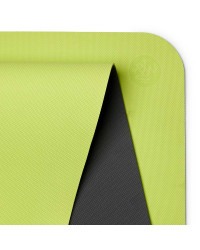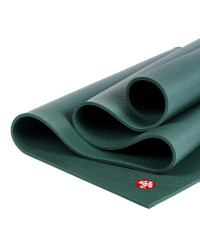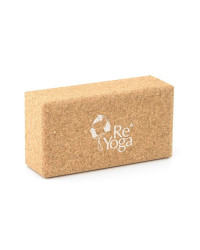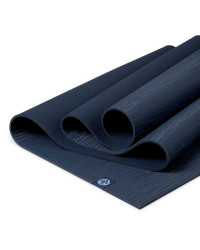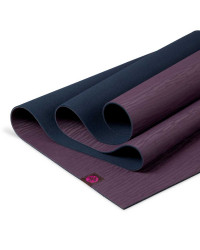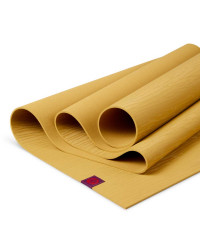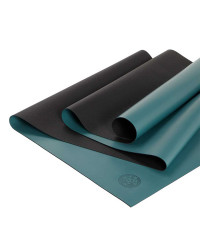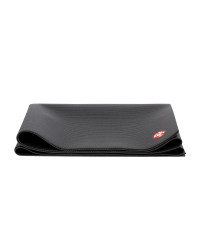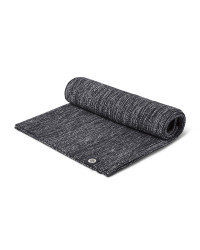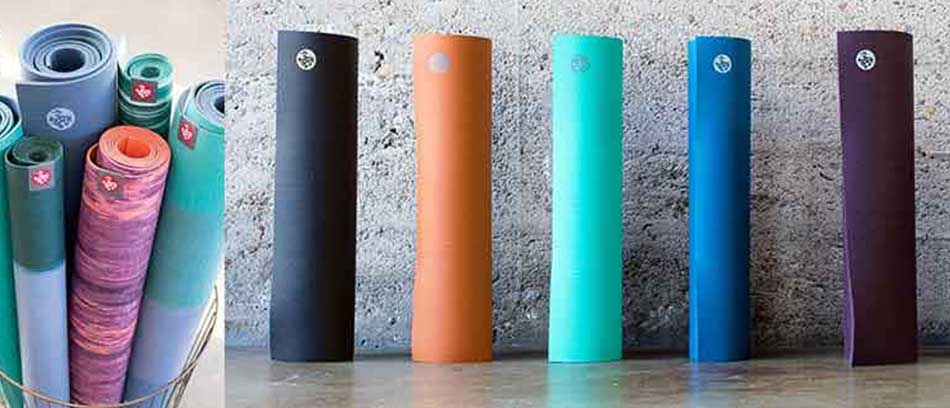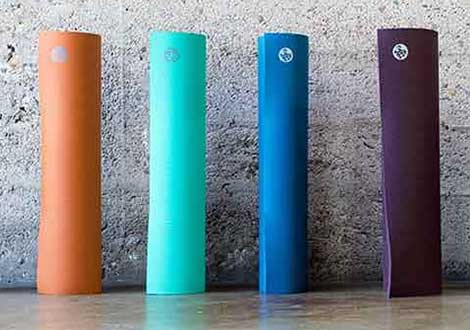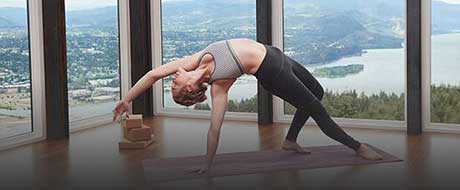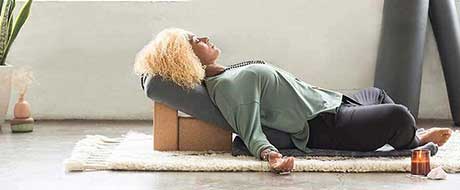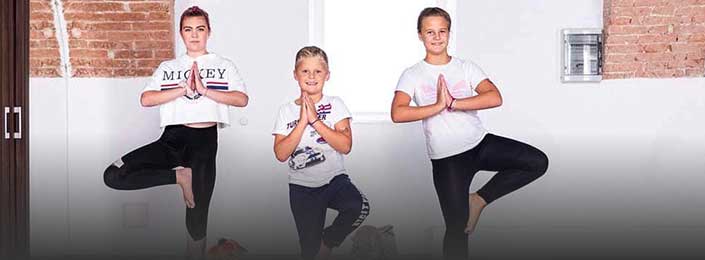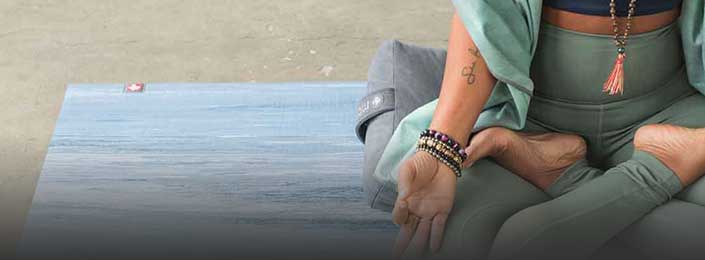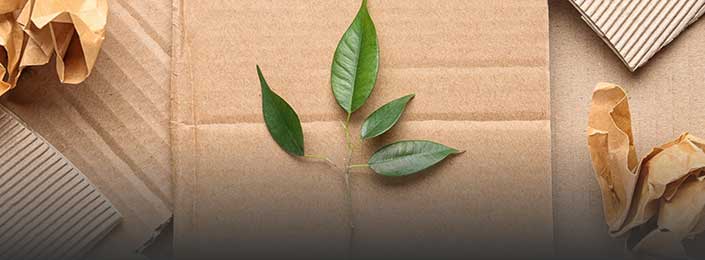We use cookies to make your experience better. To comply with the new e-Privacy directive, we need to ask for your consent to set the cookies. Learn more.
Types of Yoga: The Complete Guide for Beginners and Advanced
Types of Yoga: The Complete Guide for Beginners and Advanced
Looking for a complete guide to the types of yoga? In this article, we will explore the different types of yoga, including their history, characteristics, and benefits. Learn which type of yoga is right for you and start your yoga journey today!
If you were attracted by yoga and you are just flirting with it, you are surely wondering where and how to start. We all (were) beginners and we know this beginner's insecurity, that's why we have prepared a short orientation to yoga, which can be of help to you.
Types of yoga - table of contents
What is yoga?
Yoga is an ancient Indian discipline that focuses on physical, mental and spiritual health. A word "yoga" comes from the Sanskrit word "yuj" which means "to combine". In yoga we unite with our inner self, with nature and with universal energy. Today there are many different types of yoga, adapted to different needs and goals. We will explore different types of yoga
What is Yoga? How to start with yoga?
History of Yoga
Yoga originated in India more than 5000 years ago years. It was originally associated with Hinduism, but eventually spread to other religions and cultures. In the 19th century, yoga became popular in Western civilization. This was due to work Indian philosopher Swami Vivekananda, who introduced yoga to Europe and America.
Mini Guide may also inspire "seasoned" practitioners to expand their horizons and try something new.
Due to the boom in yoga in recent years, the availability of information and various resources about yoga has increased - image, video, text, and at the same time new, modified styles of yoga or yoga practices tailored to specific needs or to the specifics of individual groups.
Types of yoga
There are many different types of yoga that differ in their characteristics and benefits.
The most popular types of yoga are:
- Haṭha yoga is a basic type of yoga that focuses on body positions (asanas), breathing (pranayama) and meditation.
- Vinyasa yoga is a type of hatha yoga that focuses on the dynamic connection of asanas with breathing.
- Iyengar yoga is a type of hatha yoga that uses props to help perform asanas correctly.
- Bikram yoga is a type of hatha yoga that performes in a room heated to 40 degrees Celsius.
- Ashtanga yoga is a type of hatha yoga that performes in a series of asanas that are repeated.
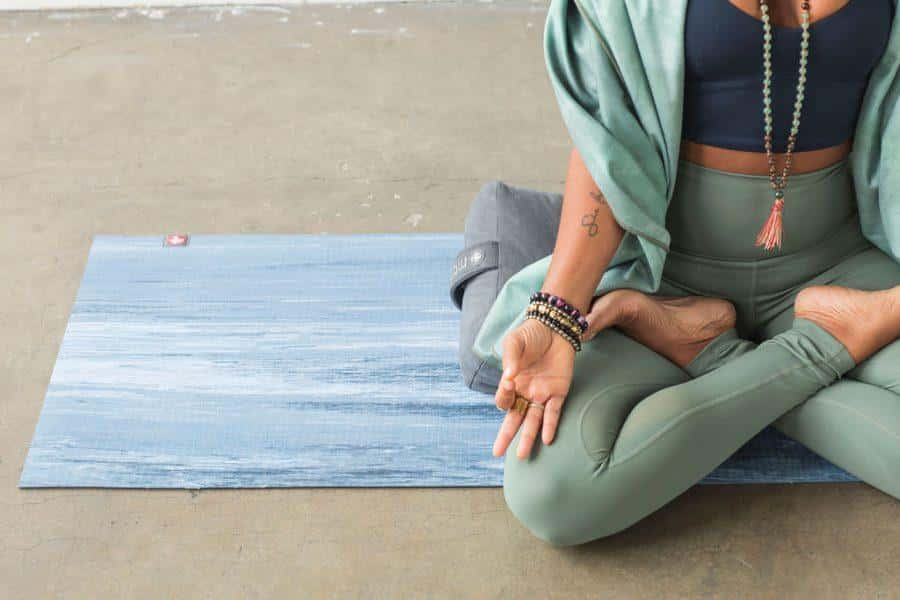
Which style/type of yoga to choose?
When choosing a style of yoga, it is important to consider your abilities and circumstances, age, method of execution... Therefore, ask about everything before the actual exercise. Explore the options, ask yourself what you want to achieve - relaxation, flexibility of the body, more demanding exercise, exercise for a certain physical specificity.
We recommend that you always start your yoga practice in a yoga studio under the guidance of trained teacher with an appropriate license and a quality teaching approach. Most of the classes are intended for different levels of difficulty - beginner, intermediate, demanding.
Thus, you will gradually get to know asanas - yogic positions, the way of breathing - pranayama, mantras - guides, texts or vibrations, mudras - position of fingers and palms, face, appropriateness of asanas (and styles) for certain physical or other limitations.
Only after mastering the basic elements, you can continue with your practice individually or upgrade it with more challenging levels.
Let us emphasize that the practice of yoga is a learning process that takes place "non-stop". Perfection of asanas, attainment effects, getting to know the breadth and depth of yoga as a science is a long-term, lifelong process. So let's not compare ourselves with yoga 'idols' from photographs in perfect asanas or deceptive promises from 'gurus'.
Let's listen to ourselves, respect our body and trust the learning process. Let's follow the basic 'purpose' of yoga practice, which, in addition to 'spiritual enlightenment', is to strengthen and calm the body, mind and spirit. In Sanskrit (an ancient Indian language), yoga is translated as "union", which describes connecting mind and body to create a greater connection with one's own pure, essential nature.
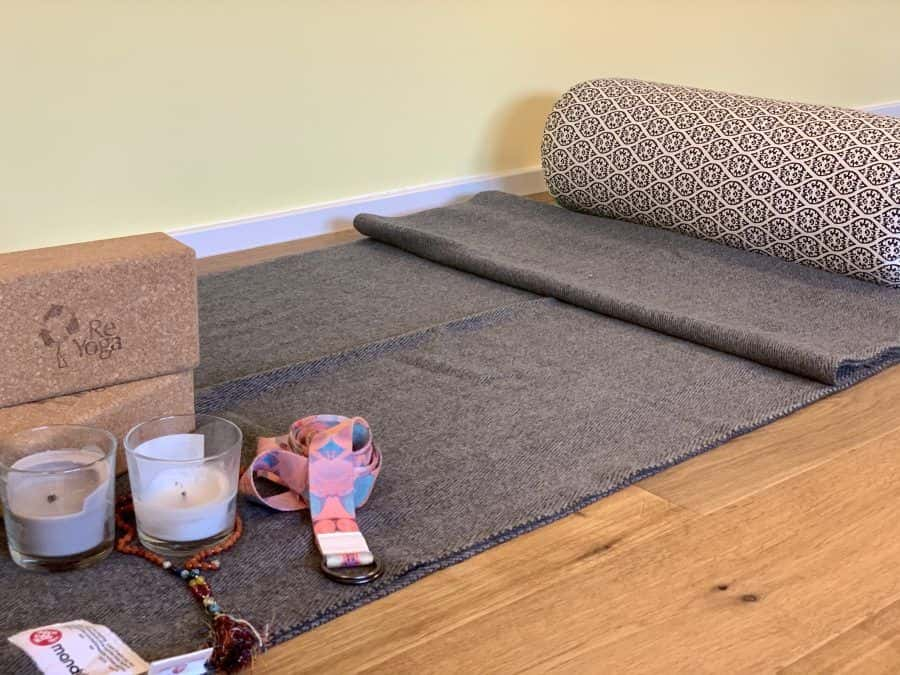
Depending on the level of difficulty of the yoga practice and the characteristics of the yoga style, it is necessary to choose the appropriate and quality yoga equipment – yoga mats, yoga blocks, straps, wheels... All the accessories that are necessary for your yoga practice to be safe and satisfying.
There are styles of yoga that include body positions, which are mostly popular in the West. There are other branches of yoga, such as kriya, raja and karma yoga, which are separate from the physical yoga practices.
Types of Yoga: Traditional and Newer Styles
HATHA yoga
The Sanskrit term "hatha" is the umbrella term for most styles of yoga that combine breathing techniques (pranayama) with asanas – physical postures. The word consists of the syllables "ha" and "tha", which represent the two various forces in the body, the solar or life force and the lunar or mental force. The purpose of hatha yoga is balancing, harmonizing both forces to maintain health and vitality - on all levels.
Hatha yoga practice usually involves a gradual introduction to asanas, with longer holdings of one asana, in a relaxed and calm rhythm, more advanced levels will teach you the techniques of pranayama - breathing, band - closure, mantra… For this style of yoga you need a yoga mat, a blanket, usually a block and a yoga strap.
Physically moderately demanding yoga practice.
VINJASA yoga
It includes elements of hatha yoga, except that it takes place in a faster rhythm and dynamic form. Asanas are connected with each other, we don't not stay in each asana for long, the complexity of the movement is greater. The sequence of asanas is usually different every hour. Music is usually used to accompany your movement. Vinyasa developed from Ashtanga yoga in the 80s. Many new dynamic forms of yoga have developed from vinyasa - e.g. power yoga. For this style of yoga, you need a yoga mat, a blanket, occasionally a block and a yoga strap, for more demanding exercise (greater sweating) is also recommended yoga towel.
A more physically demanding yoga practice.
ASHTANGA yoga
Similar to vinyasa yoga, it is based on the connection of movement - asanas and breath, except that the sequence of asanas is always the same. Asana sequence – the sequence includes Sun Salutation and then different asanas depending on the difficulty of the series – primary, secondary, advanced A, B, C, D. The movement uses ujjai breath - victorious breath. Ashtanga yoga is taught according to the system of master K. Pattabhi Jois. For this style of yoga you need a yoga mat, blanket, from time to time also a block and a yoga strap, with more demanding exercise (more sweating) it is also recommended yoga towel.
Physically demanding yoga practice.
IYENGAR yoga
Iyengar is a style of yoga that emphasizes the correct, precise execution of asanas. Iyengar yoga usually uses many yoga props/accessories – blocks, yoga strap, bolsters, yoga chair, blankets, etc., which they help the practitioner find the correct alignment. Usually there is no music used in the class, the performance of the asanas is longer and slower to allow practitioners to go deeper into the asana. Also suitable for those with an injury or with a chronic medical condition. Iyengar teachers undergo comprehensive training to get the necessary knowledge. It is taught by master BKS Iyengar, who systematized more than 200 classical yoga positions and 14 different breathing techniques (with variations).
Basic level of difficulty, later more physically demanding.
KUNDALINI YOGA
Kundalini focuses on repetitive movements synchronized with the breath (kriya) along with chanting and meditation. The practice focuses on awakening the 'kundalini' energy at the base of the spine to draw it out through each of the seven chakras (energy areas throughout the body). The mantra "Sat Nam" (meaning "I am truth") will certainly be one of the central ones in the kundalini yoga class. It was brought to the West by Yogi Bhajan. Usually, this yoga requires a yoga foundation and blanket.
Basic level of difficulty, later more physically demanding.
YIN yoga
Yin yoga is a slow style that is supposed to be meditative and relaxing. It is often confused with restorative yoga, as both use props to help hold body in passive asanas for a few minutes. The emphasis is on lengthening the connective tissue - tendons, fascia and ligaments - to improve mobility and increase circulation in the joints. Yin yoga involves a special certain restorative positions - asanas and is excellent for regeneration and rest and suitable for anyone who are facing health challenges (burnout, chronic diseases). He founded it and taught for the first time in USA in the late 1970s martial arts expert and Taoist yoga teacher Paulie Zinc.
In this yoga, in addition to the yoga mat, accessories are used - blocks, yoga straps, various bolsters, blankets, chair, pillows for eyes.
Basic difficulty level.
RESTORATIVE yoga
Restorative yoga focuses on relaxing the body and mind in a calm rhythm, using tools - as in yin yoga. Staying in the asanas is longer, even up to 10 minutes, which enables gentle stretching of the body supported by accessories - yoga bolster, yoga bags & straps, bolster, blankets. In an hour, in this way you can do up to 6 asanas. Just like yin yoga, it is also suitable for people with health problems.
Basic difficulty level.
HOT/hot yoga
Yoga performed in a heated and humid room. Generally similar to Bikram yoga, except the asana sequence of hot yoga deviates from the Bikram sequence. Dynamic and lively style with a lot sweating. Due to the humid environment, essential equipment is a quality yoga mat and towels, which ensure good grip and a high level cleanliness.
Physically medium demanding level.
SIVANANDA yoga
A style of yoga based on the five principles of yoga: proper breathing, relaxation, nutrition, exercise and positive thinking. It all contributes to a healthy yogic lifestyle. All this contributes to a healthy yogic way life. Asana practice is usually twelve basic postures or variations of asanas with sun salutations and Savasana. Music is not playing. You need a yoga mat and a blanket.
Basic difficulty level.
There are many other forms and styles of yoga practice, each with its own characteristics. There are e.g. hormone yoga, yoga for pregnant women, yoga for babies and children, jivamukti...
Be open, explore and let yourself be surprised. You will surely learn something new things about yourself, about the world... You may need a gentler, slower form, second time more dynamic. When find a suitable style and teacher for you, persevere and develop a regular practice.
Effects of yoga
Yoga has many positive effects on health and well-being. It can help with:
- Reducing stress and anxiety
- Improving balance and flexibility
- Increasing strength and endurance
- Improving cardiovascular health
- Reducing pain in the back and joints
- Improving sleep
- Increasing self-confidence and self-esteem
How to start yoga
If you want to start yoga, it is best to take a yoga class led by a qualified teacher. The teacher will be able to help you with the correct execution of body positions and breathing exercises.
Consider your physical fitness. If you are a beginner, choose a type of yoga that is tailored for beginners. Keep your goals in mind. If you want to improve your flexibility, choose a type of yoga that focuses on flexibility. If you want to improve your endurance, choose a type of yoga that is dynamic.
If you can't go to a yoga class, you can also practice yoga at home. There are many books and videos that teach you the basics of yoga.
